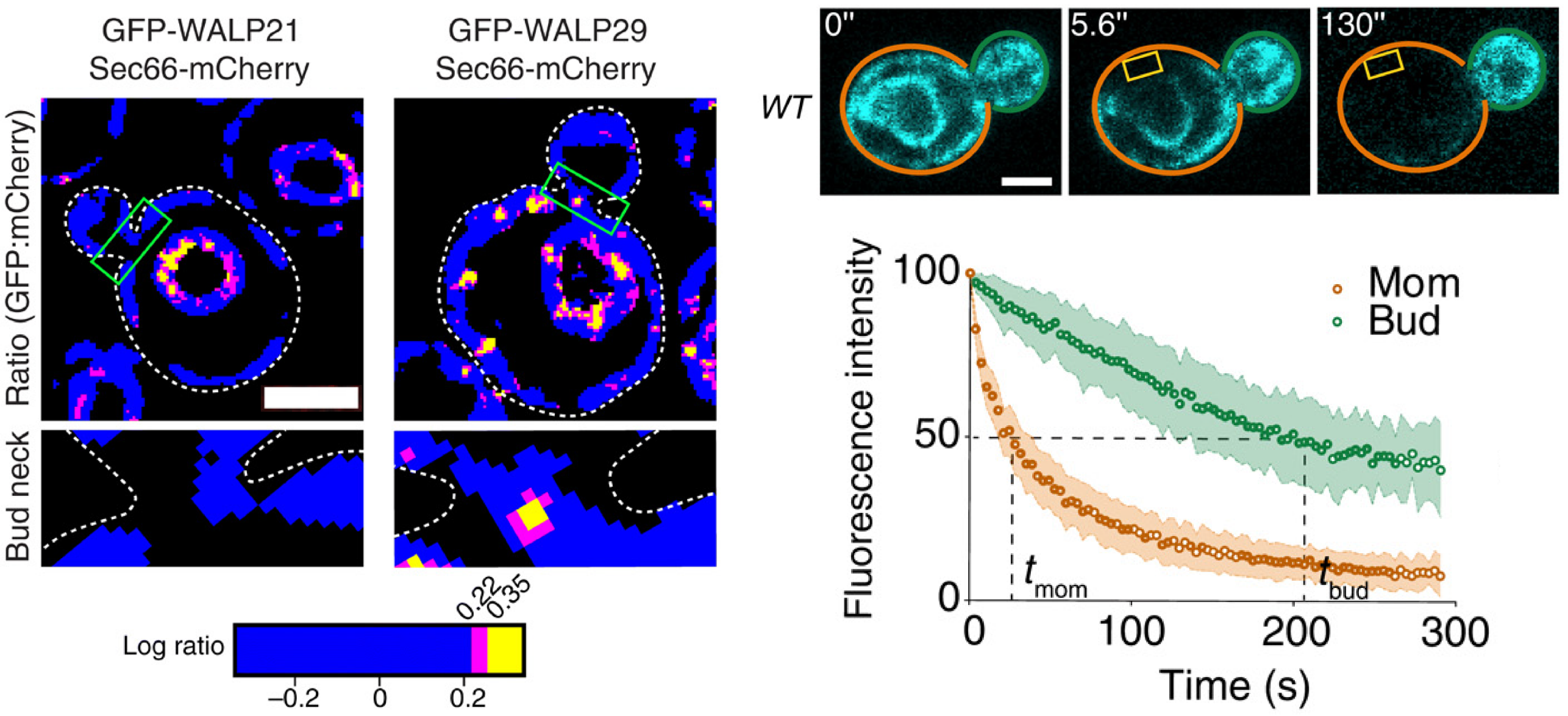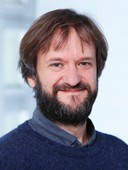Topic 3: Diffusion barriers and the control of ageing
Asymmetric cell division offers the opportunity for cells to partition cell fate determinants and aging factors unequally between the two future daughter cells, such as to produce a naïve and rejuvenated daughter cell and a differentiated one. For example, through successive budding, yeast mother cells accumulate aging factors and memory engrams, while their daughters are generated free of them. These daughters are born naïve of their mother’s memory and enjoy a fully reset lifespan potential.
Beside studying the mechanisms of aging and memory (see Topic 2: Nuclear dynamics during mitosis and ageing and Topic 4: Adaptive decision-making in budding yeast), our Lab studies how the mother cell ensures that age and memory is not passed on to their progeny. These studies have led us to identify lateral diffusion barriers in the ER and mitochondrial membranes and to show that they play a key role in confining aging and fate determinants into the mother cell. Our most recent studies focus on the mechanisms of barrier assembly and function, and on how these barriers are regulated in response to various stresses and environmental signals.

(Left) Top: Proteins with variable length transmembrane domains (TMDs) are used as sensors to map the endoplasmic reticulum (ER). The significant magenta and yellow pixels, observed in the long TMD proteins (GFP-WALP29:Sec66-mCherry) ratiometric image, indicate regions of increased thickness. Bottom: Close-up images of the bud neck regions (green boxes in the upper images) are shown (scale bar, 2 μm).
(Right) Top: Metaphase cells expressing Sec61-GFP were subjected to constant photobleaching (yellow box, bleached area); elapsed time is indicated in each movie frame (scale bar, 2 μm). Bottom: Average fluorescence decay kinetics for the mother (orange) and the bud (green). The different decay time between the two traces indicates that, because of the thickening at the bud neck − in fact a diffusion barrier −, ER membrane proteins diffuse freely within the mother cell or bud, but barely exchange between the two.
For more details on the study see Prasad et al. Science Advances 2020, 6 (46) eaba5130; DOI: external page 10.1126/sciadv.aba5130
Contact person for this topic:
Interested in a Master Project on this topic?
Highlight publications:
Contact
Institut für Biochemie
Otto-Stern-Weg 3
8093
Zürich
Switzerland
